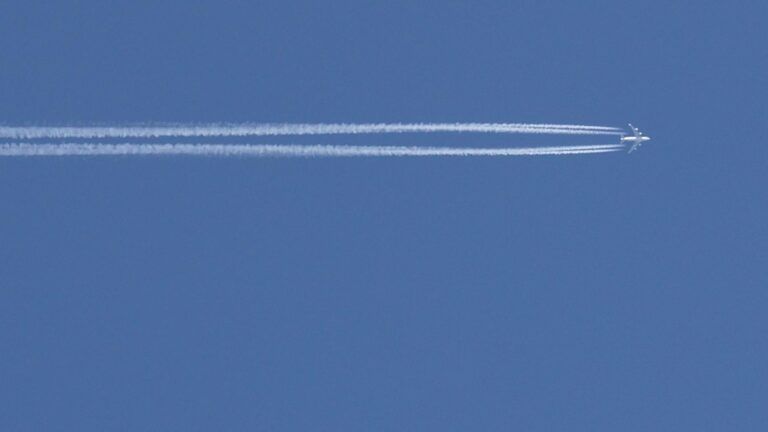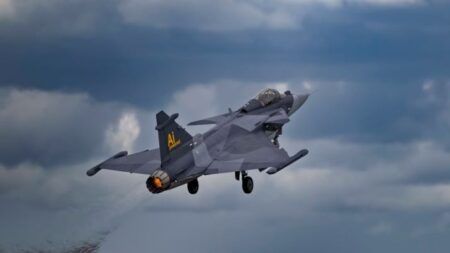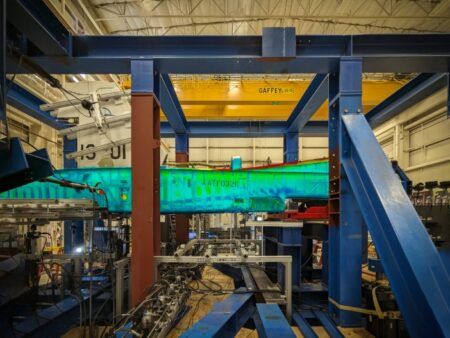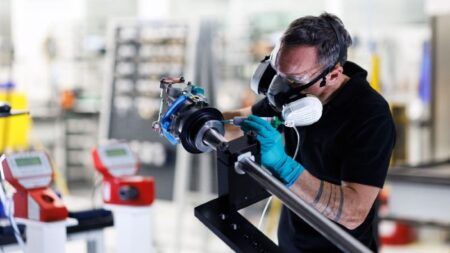The latest commercial aircraft flying could be contributing more to climate change by leaving longer-lived contrails in the atmosphere, a study by scientists at Imperial College London has found.
The study, which highlights the challenges the aviation industry faces to reduce its impact on the climate also concludes that private jets produce more contrails than previously thought, potentially leading to outsized impacts on climate warming.
Contrails – the thin streaks of cloud created by aircraft exhaust fumes – contribute to global warming by trapping heat in the atmosphere.
While the exact warming effect of contrails is uncertain, scientists believe it is greater than warming caused by carbon emissions from jet fuel.
Published in Environmental Research Letters, the study used machine learning to analyze satellite data on over 64,000 contrails from aircraft flying over the North Atlantic Ocean.
Modern aircraft that fly above 38,000ft, such as the Airbus A350 and Boeing 787, create more contrails than older passenger-carrying commercial aircraft, the study found.
To reduce jet fuel consumption, modern aircraft are designed to fly at higher altitudes where the air is thinner with less aerodynamic drag, compared to older commercial aircraft, which usually fly at around 35,000ft.
Higher-flying aircraft create less carbon emissions per passenger but create contrails that take longer to dissipate, which creates a warming effect for longer and a complicated trade-off for the aviation industry.
In a statement, Dr Edward Gryspeerdt, the lead author of the study and a Royal Society University Research Fellow at the Grantham Institute – Climate Change and the Environment in the UK said,
“This study throws a spanner in the works for the aviation industry. Newer aircraft are flying higher and higher in the atmosphere to increase fuel efficiency and reduce carbon emissions.
“The unintended consequence of this is that these aircraft flying over the North Atlantic are now creating more, longer-lived, contrails, trapping additional heat in the atmosphere and increasing the climate impact of aviation.
“This doesn’t mean that more efficient aircraft are a bad thing – far from it, as they have lower carbon emissions per passenger-mile. However, our finding reflects the challenges the aviation industry faces when reducing its climate impact.”
The study confirmed a step that can be taken to shorten the lifetime of contrails, namely to reduce the amount of soot emitted from aircraft engines due to inefficient fuel burn.
Modern aircraft engines are designed to be cleaner, typically emitting fewer soot particles, which cuts down the lifetime of contrails.
Co-author Dr Marc Stettler, a reader in transport and the environment at the department of civil and environmental engineering, Imperial College London, said: “From other studies, we know that the number of soot particles in aircraft exhaust plays a key role in the properties of newly formed contrails. We suspected that this would also affect how long contrails live for.
“Our study provides the first evidence that emitting fewer soot particles results in contrails that fall out of the sky faster compared to contrails formed on more numerous soot particles from older, dirtier engines.”





